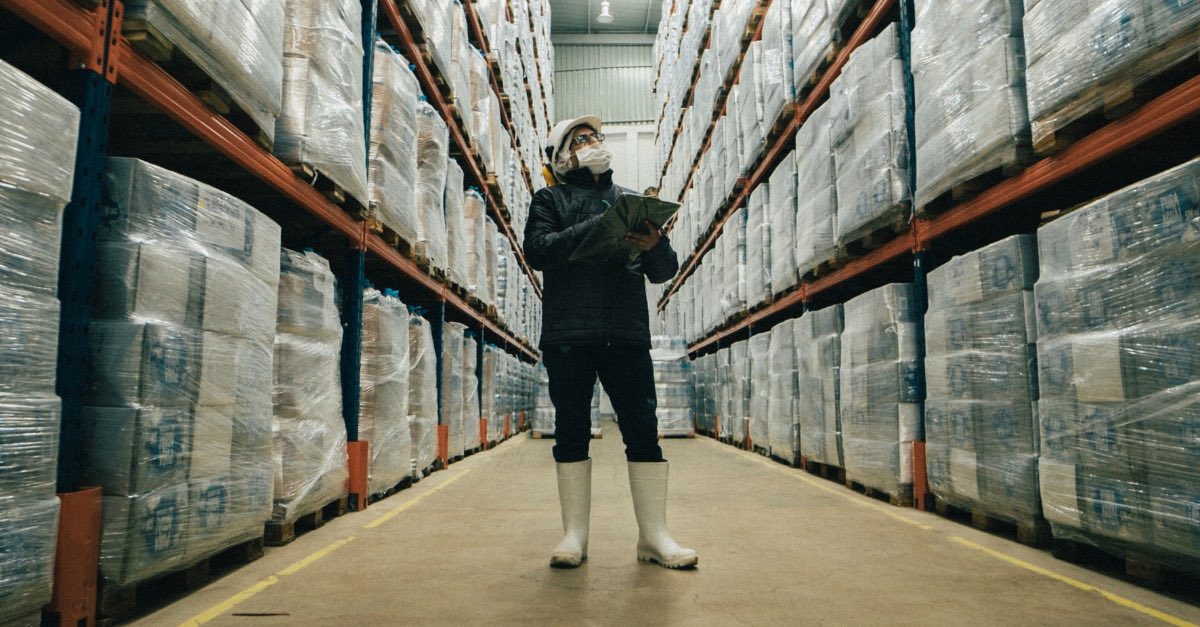(This blog is the final installation of a three-part series on needle-moving actions businesses can take on climate. You can read the first blog here and the second blog here).
As scientists continue to sound the alarm on climate, businesses are making bold commitments to help limit warming to 1.5°C. In addition to reducing operational emissions (Scopes 1 and 2), leading businesses are now focusing on reducing emissions outside their direct control (Scope 3).
For many companies, a lion’s share of these Scope 3 emissions are found in the supply chain, from the energy used to create goods and services. In fact, supply chain emissions are on average 11.4 times higher than operational emissions.
Engaging your suppliers to reduce these emissions is critical to meeting global climate goals, but it’s easier said than done. Read on to learn how you can collaborate with your suppliers to reduce your Scope 3 emissions impact.
Supplier Engagement Best Practices
Before we dive in, first let’s cover a few supplier engagement best practices.
1) Make the process valuable for your suppliers. Just like any good relationship, supplier engagement has to be a two-way street. If you want to see real improvement, you need to be clear about what value your suppliers will gain from participating in your program, whether that’s a better understanding of their performance or financial perks.
2) Avoid using a one-size-fits-all approach. Suppliers are often at different stages of the sustainability journey. Some may not even know how to measure GHG emissions, while others may already be engaging their own suppliers. Be sure to segment your suppliers by size, region, and maturity.
3) More carrot, less stick. Your suppliers are partners to collaborate with. Don’t just use the “stick” for motivating improvement, such as threatening to pull contracts for poor performance. Instead, focus on ways to build capacity and incentivize participation in your initiatives.
4) Share out supplier learnings. Take time to learn from your suppliers, too. Suppliers in industries that are further along likely have valuable insight to share on how to reduce GHG emissions. Socialize these learnings throughout your entire value chain.
The Supplier Engagement Journey
Keeping the above best practices in mind, it’s also important to understand that supplier engagement is a journey. It goes far beyond simply asking your suppliers to share their GHG emissions data.
There are three phases of supplier engagement – preparing and aligning, assessing progress, and creating a game plan for improvement. These are summarized below, in the context of engaging your suppliers on supply chain emissions specifically.
Keep in mind that this is an iterative, collaborative process, not something you check off every few years. In fact, the best supplier engagement strategies have at least a 3-5 year time horizon.
1) Prepare and align your suppliers and internal teams. Notify internal teams and inform suppliers about your upcoming campaign. Many suppliers aren’t tracking GHG emissions, so be sure to establish what’s going to be expected and communicate what resources will be available to them. Remember, to build lasting relationships, your suppliers need to trust the GHG data collection process. Clearly spell out how their data is going to be used and assure them that “wrong” answers won’t be penalized.
2) Measure supply chain emissions and uncover hotspots. Send out a brief assessment to gather GHG emissions data from your suppliers. If you’re a big company with mature suppliers in terms of GHG awareness, the CDP Supply Chain Questionnaire is the easiest way to do this. For smaller companies or those with small- and medium-sized enterprise (SME) suppliers, a standardized spreadsheet will do the trick.
If your suppliers don’t know how to calculate their GHG footprint, empower them with tools and resources to bring them up to speed. Or, ask for energy use data instead of emissions, which you can then use to calculate emissions intensity by spend.
3) Share back results and co-create an improvement plan. Once you have a baseline of performance, share those results back with your suppliers. Identify any barriers your suppliers face to reducing emissions and co-create a plan for improvement. For instance, perhaps this is a plan for increasing renewable energy use by 50% in the next 5 years.
Focus Areas for Supply Chain Emissions Reduction
After you’ve opened up a line of communication with your suppliers and started building a foundation of trust, you’re ready to get to work. Consider the following focus areas for supply chain emissions reduction:
- Renewable energy procurement. Helping suppliers switch to renewable energy sources is one of the quickest, most effective ways to reduce supply chain emissions. Suppliers in deregulated electricity markets may even be able to collectively negotiate a renewable energy deal with their local utility provider.
- Shift to more efficient modes of transport. Work with your suppliers to replace air shipments with ground or marine freight. This is an easy way to reduce Scope 3 emissions - long-haul air freight emits 47 times as much carbon as ocean freight.
- Identify energy efficiency opportunities. As we mentioned in Part Two of this series, the cheapest energy is the energy you don’t use. The same applies for your suppliers. Help them identify ways to increase energy efficiency, such as installing an Energy Management System, retrofitting HVAC systems, and upgrading equipment.
- Shared goal setting. Many leading companies are starting to include their suppliers in their emissions reduction goals. For instance, in addition to setting your own Science-Based Targets (SBTs), you could commit to helping your top 20% of suppliers set SBTs.
- Help suppliers decarbonize their own supply chains. A longer-term strategy is to help your suppliers address their own Scope 3 emissions. Today’s multi-tier supply chains are increasingly complex. For true supply chain decarbonization, your supplier engagement program needs to get down to the source.
Incentivizing and Empowering Improvement
Your suppliers’ progress on GHG emissions reduction directly influences your ability to deliver on your goals. To help them help you, it’s critical to empower, reward, and incentivize improvement. Here are some ways you can do this:
- Incorporate Scope 3 expectations in your supplier Code of Conduct. In your supplier Code of Conduct, let your manufacturing partners know that they’ll need to share GHG data with you on an annual basis. Be sure to emphasize that they won’t be punished for having a “bad” initial GHG emissions score. Note that the creation of a Code of Conduct may need to be a work in progress as your supplier engagement program matures.
- Provide suppliers with a sustainability scorecard. Too often suppliers are asked to provide data without getting anything back. Simply giving suppliers feedback on how they’re doing compared to their peers is a great way to incentivize improvement and start a dialogue on what support they may need.
- Reward suppliers with preferential terms. Show your most sustainable suppliers that their efforts aren’t going unnoticed. A meaningful way to reward progress is by offering preferential terms, such as longer contracts. Similarly, you could create an awards program to recognize and encourage action.
- Build capacity around GHG emissions reduction. Host webinars, online trainings, and virtual facility walkthroughs to help your suppliers identify ways to reduce operational emissions. For example, Apple enabled its suppliers to double their use of renewable energy with trainings and resources to guide them through the transition to clean power.
- Look into sustainable supplier financing. Access to capital is often one of the biggest barriers suppliers face when making improvements. Sustainability-linked supply chain financing can help suppliers make the factory upgrades and investments needed to reduce energy use. The partnership between Walmart and HSBC is a great example.
Browse through the slideshow at the bottom of this post for few of our favorite supplier engagement tools and collaborations to help you turn these strategies into action.
What’s Next?
Supply chain decarbonization is the next frontier of corporate climate action. Recent IPCC reports have made it clear that our window for limiting warming to 1.5°C is closing fast. To have any chance of meeting these deadlines, businesses must start looking outside their own four walls.
Remember, your suppliers are not just a means to an end for providing goods and services. They are your partners throughout every step of the net zero journey. Without their support and buy-in, you will undoubtedly fall short on impact.
Need guidance on engaging and empowering your suppliers to reduce Scope 3 emissions? Our team can help! Learn more here.
------------------------








